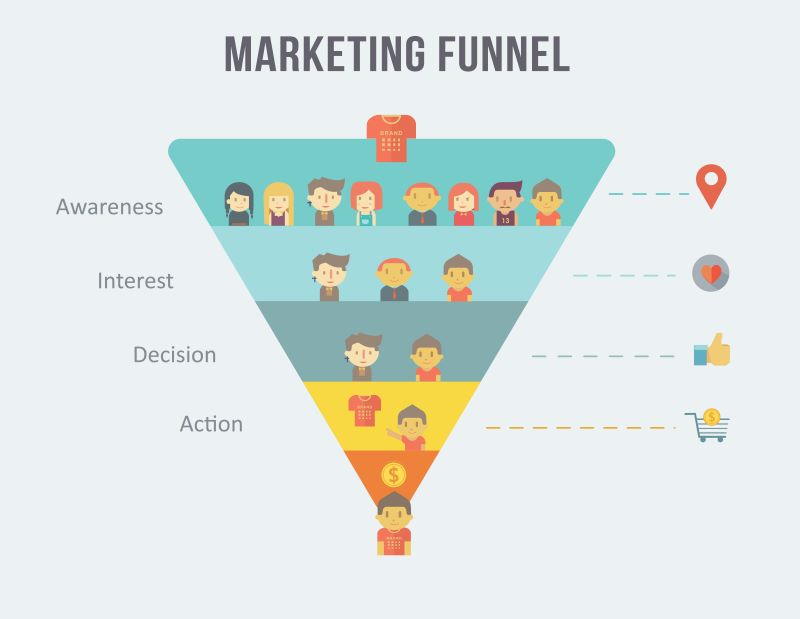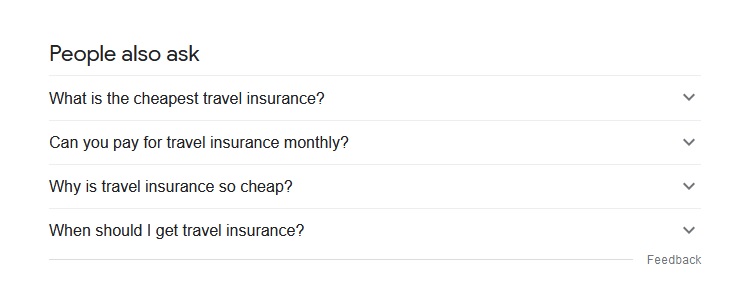If you’re running any form of content marketing, from pay per click to search engine optimization, you’ll need to build a list of keywords to target. But how do you choose those keywords? And how do you find the ones that perform the best?
The key here is user search intent. These keywords identify the type of language we’re using to trigger those search results. And understanding how these search terms work can help you identify both content ideas for your SEO campaigns, and the best keywords to target for your PPC ads.
Search intent categories
An online search is usually informed by one of the following types of user intent. That is:
- Information
- Navigation
- Transaction
- Commercial
Information
The user’s intent is to answer a question or find a solution with available information. Looking up the weather, a random fact or a recipe falls under information searches.
An example of informational intent would be:
- What equipment do I need to go hiking in the Alps?
- How far is it from Singapore to Tokyo?
- Easy chicken noodle recipes
- What is user search intent?
Although the user might click on whatever pops up first, they are also likely to browse the search results for their best option. As they’re searching for the best information, they’re more likely to spend a moment considering which page has the results they’re looking for.
Generally speaking, these types of queries don’t often feature paid search results. Although there are of course exceptions.
Navigation
Navigation refers to people searching for a specific company in the search engines, although it can also be used to refer to general business searches.
For example, a navigation search would usually either be the name of a specific company or one of their unique services:
- ClickCease
- Google Adsense
- HSBC banking login
In most cases, the searcher is most likely to click on the first option that meets their search. This might be paid or organic.
Transaction
Transactional searches refer normally to the user intent to either buy or find the best option. The user might be ready to buy, or they might still be researching their options. In general, transaction searches are those that signify a strong user intent to actually purchase.
- Cheap flights to Milan
- Buy garden furniture online
- Get car insurance quotes
- Flowers with same day delivery
Marketers looking for high performance keywords often target transaction based search terms as they’re usually very much middle to bottom of the sales funnel.
Searchers are quite likely to click on the top result (paid result) but are also just as likely to scroll through the organic results to find their best match. They’re also more likely to perform multiple searches of the same term to find their best match and best price.
Commercial
Commercial investigation falls somewhere between navigation and transactional. The searcher might be researching a company, trying to choose between two business competitors to find the best service or price, or looking for an alternative for a service they already use.
- ClickCease reviews
- Alternative to Microsoft Teams
- Brand A vs Brand B
This category can also include product related keywords, for buyers looking for the best deal.
- Best iPhone contract price
- iPhone contract with free gift
There is a strong opportunity for both paid and organic marketing here, with searchers using both types of search results for their research.

How to determine user search intent
Adding a prefix like ‘buy’ or ‘best price’ to a search term seems like the obvious way to spot a transactional or commercial search term. But it’s not always this simple.
For example, you might not always add your intent to a search query, especially if you’re typing out your search.
A user might simply search for a product or service and pick anything from the paid or organic results:
- Accountant
- Holiday deals
- Business banking
- Sustainable footwear
All of the above terms will feature paid search results, often with plenty of choice for the searcher.
These root search terms are often used in PPC campaigns, but with modifiers such as negative keywords.
Low intent keywords
Generally speaking, searches for information are likely to be low intent. That’s why you’ll rarely see paid search results for most question based searches.*
(*lots of exceptions to the rule of course)
These are usually search terms which contain search modifiers such as:
- When…
- Where…
- How to…
- How many…
- Why…
- Best way to…
- Easiest way to…
- Recipe
- Instructions
You don’t want to be shelling out marketing budget on these sorts of keywords for your PPC campaigns.
In fact, these are the types of searches you want to add to your negative keywords list.
Selling craft beer?
You don’t want your landing page for home deliveries of beer to be triggered by searches for:
“How to make craft beer”, “Why is craft beer so popular” or “How many craft beer breweries in San Diego”. In these cases you’ll be wanting to add search terms like these to your negative keywords list so your ad doesn’t show up.
But… These are exactly the types of search terms you might want to be targeting for your organic search results.
If you’re building an SEO campaign, most will base content around informational content, how-to-guides, infographics and other accessible information designed to build trust in your brand.
So, what about targeting those high performance keywords which are more likely to convert?
How do you spot user intent to buy right now, or as soon as possible?
High intent keywords
If you think about how you personally search online, when it comes to making a decision, usually we use terms with a sense of immediacy or urgency.
The most common examples of high intent keywords usually feature these urgency search modifiers, such as:
- Now…
- Cheap/cheapest…
- Quick/free delivery…
- Near me…
- Open now…
- In stock…
- Booking…
- Urgent….
- Same day…
- Next day…
- I need…
- Get…
- Now…
However, when it comes to a decision we also often find ourselves looking for the best option or the best value for money. So typical examples of value focused keywords would include:
- Best…
- (Service) Quotes…
- Compare…
- Deals…
- Free trial…
So if you’re looking for a new cell phone, you’ll be looking for “Best cell phones under $600” or perhaps “Samsung phone contract deals”.
Or, if you need insurance for a last minute vacation, you might search for “Travel insurance quotes” or “Best travel insurance”.
Like all aspects of marketing, much of the work lies in understanding your core demographic and asking yourself what they’re looking for.
Put yourself in the shoes of your ideal customer and ask yourself what are their pain points?
What language are they using to find what they want/need?
What does their journey look like from awareness to purchase?
These questions will normally lead you to those coveted high intent keywords.
The customer journey
If you’ve looked at any other content about content, SEO and PPC, you’ll have seen lots of talk about the customer journey. And this is a key component to understanding search intent and, by extension, those high and low intent keywords.
Again think about how you search and review products yourself.
You realise you need to make your content strategy more effective, so you start reading up on keyword intent and other elements (such as this awesome article).
As a fairly technical process, there are usually a lot of tools to help you automate your ad research and targeting, or, in our case, to make ads more effective.
So the customer journey starts with an awareness of a problem and a search for a solution.
The sales funnel is a well known visualisation of this customer journey, and understanding these steps is still a great way to identify when keywords go from informative, or low intent, to high intent commercial or transactional.

When you’re working out your customer journey, it’s a good idea to map this out, ideally with an old fashioned piece of paper and a pen. A spreadsheet is great and all, but making it more tangible by putting it down on paper makes it easier to get an overview.
And guess what…
There are also a lot of tools to help you find and make sense of user intent and the related keywords!
How to find high intent keywords
If you’re using Google Search Console, you will already have access to data about keyword performance on your website.
You can also use Google Analytics to check out how your keywords are performing on both your paid and organic search terms.
Go to your Google Analytics dashboard and in the side bar, click on:
Acquisition > Campaigns > You’ll then see options for Paid Keywords and Organic Keywords.
From here you can find out which words have the best traffic, conversion rates and bounce rates.
What about finding niche search terms, long tail keywords and other high intent diamonds?
For starters, you can use a number of free tools such as:
- Answer The Public
- Keywords Everywhere
- Ubersuggest
You can even try running a Google search for keywords that you’ve identified and see what shows up under the ‘Related Searches’ at the bottom of the page, and the ‘People Also Ask’ section that normally sits in the middle of the SERPs.

There are also (of course) a growing number of great paid tools for keyword research such as:
- Ahrefs
- SEM Rush
- WordTracker
- KW Finder
- SERP Stat
We like to use a mixture of Keywords Everywhere, Google Trends, Ahrefs and a few other tools.
Check out our guides to Doing Keyword Research, Best Keyword Research Tools and How To Use Negative Keywords for more in-depth details.
The importance of quality traffic
Did you know that on paid search and display ads, around 15% of all clicks are from fraudulent sources?
This means bots and web scrapers, competitors, brand haters, click farms and more.
So for all your user intent research, some of them are just out to sap your ad budget. In fact, 90% of all PPC campaigns are affected by this practice, known as click fraud.
The impact of this fraudulent traffic is that your CPC and your CPA go up, your ad quality score goes down and you spend more money on non-genuine clicks.
ClickCease are the number one provider of click fraud blocking software, which means that we make sure that the only people clicking your ads are people with a genuine interest in your site.
How do we do that?
For starters, we block known sources of fraud in real time, including those hated bots and click farms.
We also give you the tools to set click blocking thresholds, based on our industry analysis. So you can be alerted if someone is clicking your ads multiple times, or other suspicious activity.
Find out more about click fraud in our guide
If you’re running Google Ads campaigns, it’s been shown that you can make big savings every month just by blocking fraud clicks. Sign up for a free audit.
